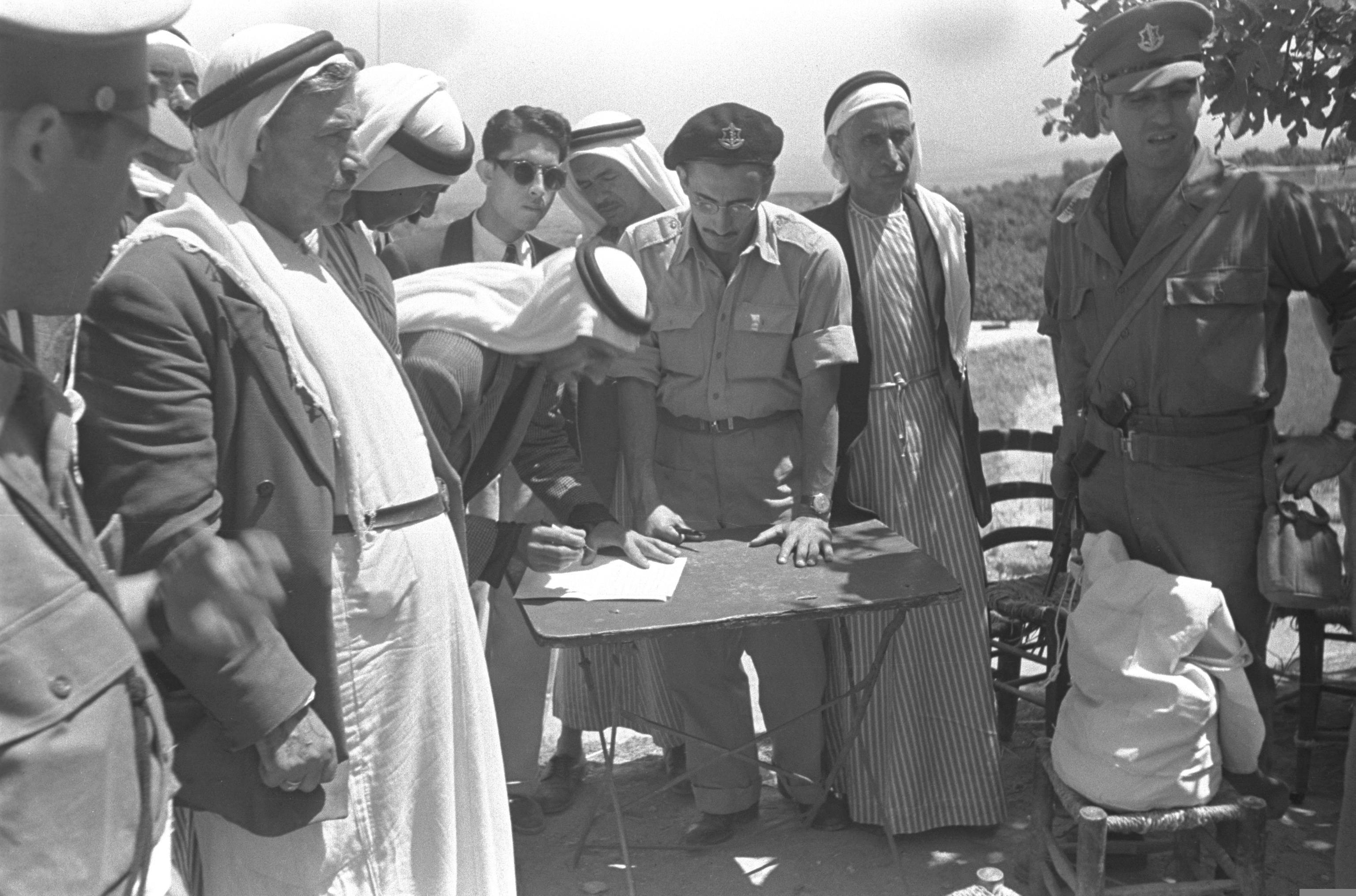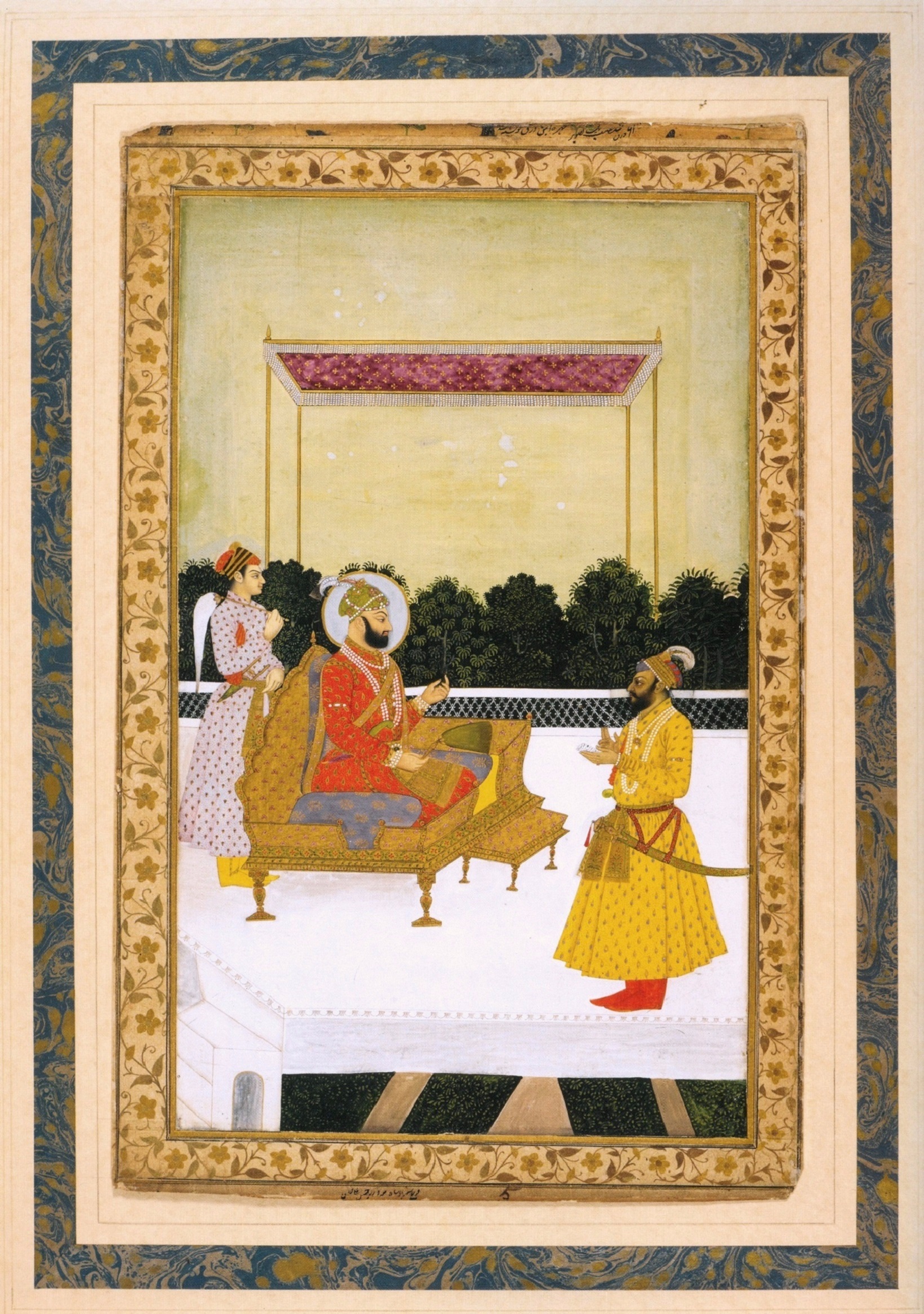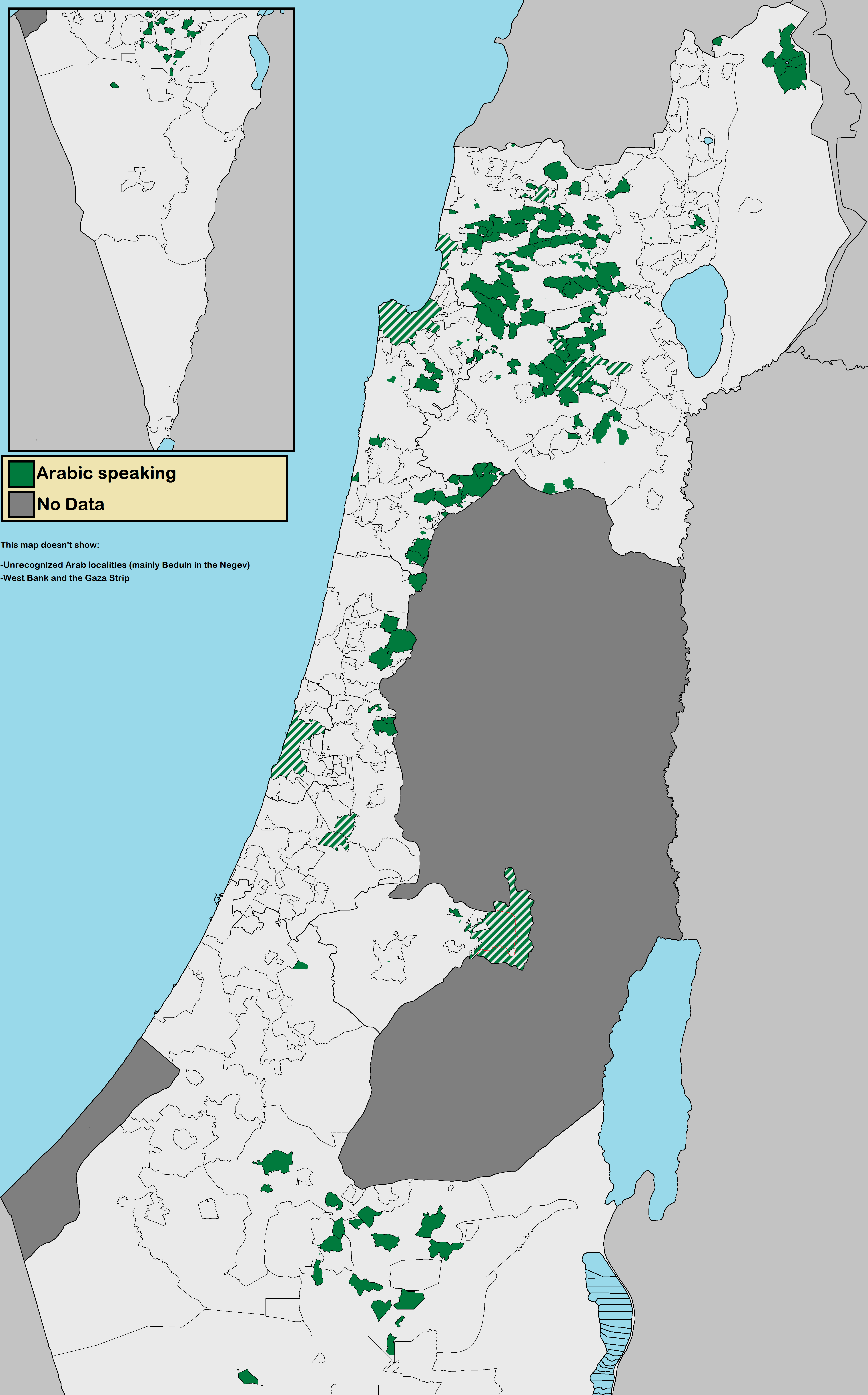|
Umm Al-Fahm Art Gallery
The Umm al-Fahm Art Gallery is an art gallery in Umm al-Fahm, Israel. The art gallery focuses on Israeli–Arab artwork, run by artist Sayid Abu Shaqra. History The gallery was founded in 1996 in the heart of Umm al-Fahm, as the initiative of artist Sayid Abu Shaqra, who to this day serves as the gallery's director and head curator. Jewish and Arab artists' works can be found at the gallery, as well as works of other Arab artists and from the Western World. This gallery is said to be the meeting place for Israeli and Arab artists. The Umm el-Fahem Museum of Contemporary Art project Owing to the success of the gallery, the gallery's management turned to Zaha Hadid in order to design a museum in Umm al-Fahm, though due to several delays Hadid dropped out of the project, and was replaced by Israeli-Arab architect Sanaan Abd al-Qadr. Due to several disagreements, his offer was denied, and a contest to find a suitable architect to design the museum was launched. In 2006, during a ce ... [...More Info...] [...Related Items...] OR: [Wikipedia] [Google] [Baidu] |
Umm Al-Fahm
Umm al-Fahm ( ar, أمّ الفحم, ''Umm al-Faḥm''; he, אוּם אֶל-פַחֶם ''Um el-Faḥem'') is a city located northwest of Jenin in the Haifa District of Israel. In its population was , nearly all of whom are Arab citizens of Israel. The city is situated on the Umm al-Fahm mountain ridge, the highest point of which is Mount Iskander ( above sea level), overlooking Wadi Ara. Umm al-Fahm is the social, cultural and economic center for residents of the Wadi Ara and Triangle regions. Etymology Umm al-Fahm means "Mother of Charcoal" in Arabic. According to local lore, the village was surrounded by forests which were used to produce charcoal. History Several archaeological sites around the city date to the Iron Age II, as well as the Persian, Hellenistic, Roman, early Muslim and the Middle Ages.Zertal, 2016, p119/ref> Mamluk era In 1265 C.E. (663 H.), after Baybars won the territory from the Crusaders, the revenues from Umm al-Fahm were given to the Mamluk ''na'ib ... [...More Info...] [...Related Items...] OR: [Wikipedia] [Google] [Baidu] |
Art Museum
An art museum or art gallery is a building or space for the display of art, usually from the museum's own Collection (artwork), collection. It might be in public or private ownership and may be accessible to all or have restrictions in place. Although primarily concerned with Visual arts, visual art, art museums are often used as a venue for other cultural exchanges and artistic activities, such as lectures, performance arts, music concerts, or poetry readings. Art museums also frequently host themed temporary exhibitions, which often include items on loan from other collections. Terminology An institution dedicated to the display of art can be called an art museum or an art gallery, and the two terms may be used interchangeably. This is reflected in the names of institutions around the world, some of which are called galleries (e.g. the National Gallery and Neue Nationalgalerie), and some of which are called museums (including the Metropolitan Museum of Art, the Museum of Mo ... [...More Info...] [...Related Items...] OR: [Wikipedia] [Google] [Baidu] |
Sayid Abu Shaqra
''Sayyid'' (, ; ar, سيد ; ; meaning 'sir', 'Lord', 'Master'; Arabic plural: ; feminine: ; ) is a surname of people descending from the Islamic prophet Muhammad through his grandsons, Hasan ibn Ali and Husayn ibn Ali, sons of Muhammad's daughter Fatima and his cousin and son-in-law Ali (Ali ibn Abi Talib). While in the early islamic period the title Al-Sayyid was applied on all the members of the of banu hashim, the tribe of Muhammad. But later on the title was made specific to those of Hasani and Hussaini descent, Primarily by the Fatimid Caliphs. Female ''sayyids'' are given the titles ''sayyida'', ''syeda'', ''alawiyah'' . In some regions of the Islamic world, such as in Iraq, the descendants of Muhammad are given the title ''amīr'' or ''mīr'', meaning "aristocrats", "commander", or "ruler". In Shia Islam the son of a non Sayyid father and a Sayyida mother claim the title Mirza. In Sunni Islam a person being a descendant of Muhammad, of either maternal or pater ... [...More Info...] [...Related Items...] OR: [Wikipedia] [Google] [Baidu] |
Israel
Israel (; he, יִשְׂרָאֵל, ; ar, إِسْرَائِيل, ), officially the State of Israel ( he, מְדִינַת יִשְׂרָאֵל, label=none, translit=Medīnat Yīsrāʾēl; ), is a country in Western Asia. It is situated on the southeastern shore of the Mediterranean Sea and the northern shore of the Red Sea, and shares borders with Lebanon to the north, Syria to the northeast, Jordan to the east, and Egypt to the southwest. Israel also is bordered by the Palestinian territories of the West Bank and the Gaza Strip to the east and west, respectively. Tel Aviv is the economic and technological center of the country, while its seat of government is in its proclaimed capital of Jerusalem, although Israeli sovereignty over East Jerusalem is unrecognized internationally. The land held by present-day Israel witnessed some of the earliest human occupations outside Africa and was among the earliest known sites of agriculture. It was inhabited by the Canaanites ... [...More Info...] [...Related Items...] OR: [Wikipedia] [Google] [Baidu] |
Israeli–Arab
The Arab citizens of Israel are the Demographics of Israel#Arabs, largest ethnic minority in the country. They comprise a hybrid community of Israeli citizenship law, Israeli citizens with a heritage of Palestinian Citizenship Order 1925, Palestinian citizenship, mixed religions (Muslim, Christian or Druze), bilingual in Arabic and Hebrew, and with varying social identities. Self-identification as Palestinian citizens of Israel has sharpened in recent years, alongside distinct identities including Galilee Bedouin, Galilee and Negev Bedouin, the Druze in Israel, Druze people, and Christianity in Israel, Arab Christians and Islam in Israel, Arab Muslims who do not identify as Palestinians. In Arabic, commonly used terms to refer to Israel's Arab population include 48-Arab ( ar, عرب 48, Arab Thamaniya Wa-Arba'in, label=none) and 48-Palestinian (). Since the Nakba, the Palestinians that have remained within Green Line (Israel), Israel's 1948 borders have been colloquially known as ... [...More Info...] [...Related Items...] OR: [Wikipedia] [Google] [Baidu] |
Zaha Hadid
Dame Zaha Mohammad Hadid ( ar, زها حديد ''Zahā Ḥadīd''; 31 October 1950 – 31 March 2016) was an Iraqi-British architect, artist and designer, recognised as a major figure in architecture of the late 20th and early 21st centuries. Born in Baghdad, Iraq, Hadid studied mathematics as an undergraduate and then enrolled at the Architectural Association School of Architecture in 1972. In search of an alternative system to traditional architectural drawing, and influenced by Suprematism and the Russian avant-garde, Hadid adopted painting as a design tool and abstraction as an investigative principle to "reinvestigate the aborted and untested experiments of Modernism ..to unveil new fields of building." She was described by ''The Guardian'' as the "Queen of the curve", who "liberated architectural geometry, giving it a whole new expressive identity". Her major works include the London Aquatics Centre for the 2012 Olympics, the Broad Art Museum, Rome's MAXXI Museu ... [...More Info...] [...Related Items...] OR: [Wikipedia] [Google] [Baidu] |
Tel Aviv Museum Of Art
Tel Aviv Museum of Art ( he, מוזיאון תל אביב לאמנות ''Muzeon Tel Aviv Leomanut'') is an art museum in Tel Aviv, Israel. The museum is dedicated to the preservation and display of modern and contemporary art from Israel and around the world. History The Tel Aviv Museum of Art was established in 1932 in a building that was the home of Tel Aviv's first mayor, Meir Dizengoff. The Helena Rubinstein Pavilion for Contemporary Art opened in 1959. Planning for a new building began in 1963 when the museum's collections of modern and contemporary art began to outgrow the premises. Construction commenced in 1966 but stopped for two years due to shortage of funds. The new museum moved to its current location on King Saul Avenue in 1971. Another wing was added in 1999 and the Lola Beer Ebner Sculpture Garden was established. The museum also contains "The Joseph and Rebecca Meyerhoff Art Education Center", opened since 1988.The museum houses a comprehensive collection of c ... [...More Info...] [...Related Items...] OR: [Wikipedia] [Google] [Baidu] |
1996 Establishments In Israel
File:1996 Events Collage.png, From left, clockwise: A bomb explodes at Centennial Olympic Park in Atlanta, set off by a radical anti-abortionist; The center fuel tank explodes on TWA Flight 800, causing the plane to crash and killing everyone on board; Eight people die in a blizzard on Mount Everest; Dolly the Sheep becomes the first mammal to have been cloned from an adult somatic cell; The Port Arthur Massacre occurs on Tasmania, and leads to major changes in Australia's gun laws; Macarena, sung by Los del Río and remixed by The Bayside Boys, becomes a major dance craze and cultural phenomenon; Ethiopian Airlines Flight 961 crash-ditches off of the Comoros Islands after the plane was hijacked; the 1996 Summer Olympics are held in Atlanta, marking the Centennial (100th Anniversary) of the modern Olympic Games., 300x300px, thumb rect 0 0 200 200 Centennial Olympic Park bombing rect 200 0 400 200 TWA FLight 800 rect 400 0 600 200 1996 Mount Everest disaster rect 0 200 300 400 199 ... [...More Info...] [...Related Items...] OR: [Wikipedia] [Google] [Baidu] |
Art Museums And Galleries In Israel
Art is a diverse range of human activity, and resulting product, that involves creative or imaginative talent expressive of technical proficiency, beauty, emotional power, or conceptual ideas. There is no generally agreed definition of what constitutes art, and its interpretation has varied greatly throughout history and across cultures. In the Western tradition, the three classical branches of visual art are painting, sculpture, and architecture. Theatre, dance, and other performing arts, as well as literature, music, film and other media such as interactive media, are included in a broader definition of the arts. Until the 17th century, ''art'' referred to any skill or mastery and was not differentiated from crafts or sciences. In modern usage after the 17th century, where aesthetic considerations are paramount, the fine arts are separated and distinguished from acquired skills in general, such as the decorative or applied arts. The nature of art and related concepts, such ... [...More Info...] [...Related Items...] OR: [Wikipedia] [Google] [Baidu] |







